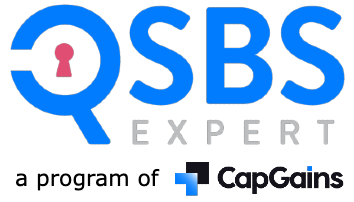QSBS 2.0 Resource Hub
With passage of the One Big Beautiful Bill Act on July 4, 2025, QSBS 2.0 was born.
The big takeaway is that there are in effect now two regimes regarding QSBS, making it more important than ever to proactively monitor eligibility. Stock acquired before the OBBBA remains subject to the same QSBS rules as before (with a max benefit of $2.38M per eligible taxpayer), but stock acquired after OBBBA is subject to the new QSBS 2.0 rules (with a max benefit of $3.57M per eligible taxpayer). Additional tax savings may be available at the state level.

What Changed?
The QSBS 2.0 changes apply only to stock issued after the enactment date, July 4, 2025.
- Increased benefit: The QSBS exclusion limit was increased to $15M per eligible taxpayer (from $10M previously), and will be adjusted for inflation starting in 2027.
- Benefits can be realized earlier: Rather than having to wait 5 years, QSBS benefits phase in starting at 3 years with the following new exclusion tiers:
- Applicable stock held for 3 years will receive a 50% exclusion.
- Applicable stock held for 4 years will receive a 75% exclusion.
- Applicable stock held for 5 years will receive a 100% exclusion.
- Expands what stock is considered QSBS: The aggregate gross asset threshold increased from $50 million to $75 million at issuance, with inflation adjustments starting in 2027; meaning that a company can issue QSBS stock later in its life cycle than before.
- R&D Expensing: Domestic R&D can now be expensed, and this change also applies retroactively. This means there is an opportunity for companies that previously exceeded the $50 million threshold due to capitalized R&D to reconsider their QSBS eligibility by refiling returns from 2022 to 2024. Foreign R&D continues to be capitalized.
How this came about and what to expect next
The One Big Beautiful Bill Act (OBBBA) marks the biggest expansion of QSBS since President Obama expanded the QSBS exclusion to 100% in 2010.
In 2022, Congressman Kustoff (R-TN) introduced legislation to expand QSBS. The OBBBA included the phasing in of the QSBS exclusion beginning after stock is held for 3 years from the Kustoff bill, but did not include the bill’s other key provisions (likely due to OBBBA being a reconciliation bill), which would have clarified treatment for convertible securities and expanded QSBS to companies that started than other than a C-corporation.
Continued efforts are underway to address the points not addressed in the Kustoff bill, so stay tuned for additional future legislation. Additionally, regulatory guidance is expected from the IRS regarding implementing OBBBA as well as potential new regulations addressing portions of QSBS.
Navigating the New Rules
Given stock can be subject to different QSBS treatment depending on when it was issued, it is more important than ever to monitor QSBS eligibility across security holdings whether you are a company or investor. See below for key planning considerations around QSBS 2.0.
Top QSBS 2.0 Planning Considerations
The need to monitor the Aggregate Gross Asset level has intensified as different issuances are now subject to different asset thresholds (i.e. stock issued prior to the bill’s enactment subject to the “old” $50M threshold, then $75M for stock issued after enactment, and future issuances starting in 2027 will be subject to a threshold which increases for inflation).
OBBBA reinstates expensing of US based R&D, and allows it to be applied retroactively in certain cases (foreign R&D will still be capitalized). If the $50M QSBS 1.0 Aggregate Gross Asset level had been exceeded previously due to the capitalization of R&D, companies may be able to refile their 2022 – 2024 returns and help the stock qualify as QSBS.
QSBS 2.0 did not change how SAFEs or other convertible securities are treated, however post-OBBBA enactment may be an opportune time to convert SAFEs, convertible notes or other securities into stock, as stock issued during the new regime is more attractive than stock issued previously. This is due to the increased per taxpayer limitation of $15 million (previously $10 million) and the way QSBS benefits are now phased in beginning at 3 years after issuance (i.e. conversion to equity).
This article does not constitute legal or tax advice. Please consult with your legal or tax advisor with respect to your particular circumstance.
